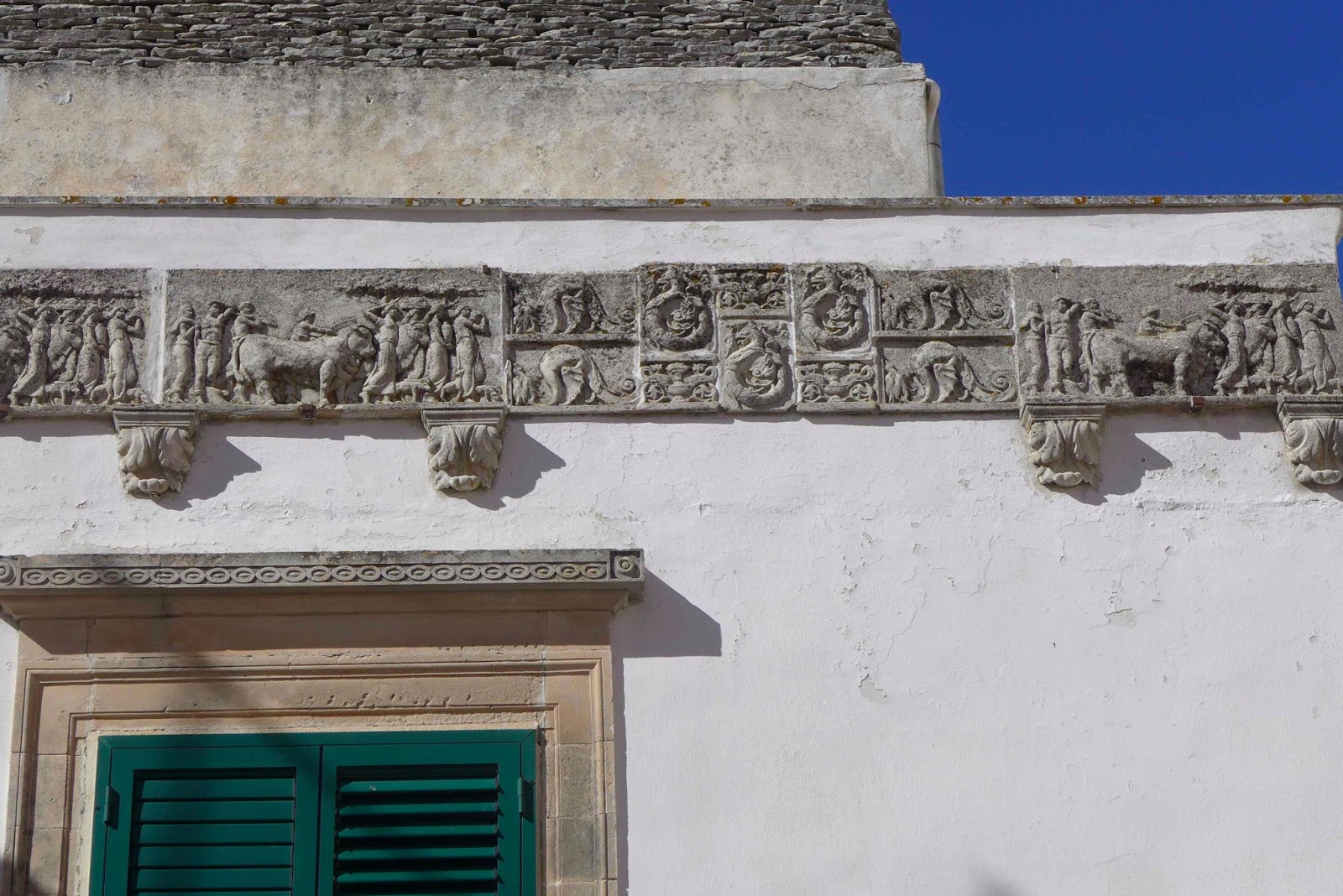A small town on Puglian Coast between Bari (North) and Brindisi (South), we enjoyed a couple of rainy days here investigating the old walled town and finding an excellent restaurant.
 |
| One of many holy shrines |
 |
| Unusual tower of seminary |
 |
| Wooden hull being lovingly restored |
 |
| Rainy Monopoli, Alan in distance returning to boatyard |
We had driven through Monopoli on our journey north and inspected the little harbour which didn't appear to accommodate visiting yachts, however on our return we were given the telephone no. of Vicenzo who runs part of the boat yard and manages a small pontoon which we were able to use. It was a fascinating experience to walk through a working boat yard and observe skilled ship wrights at work even in the rain. Yes unfortunately it rained for most of our visit but we sought refuge in probably the best restaurant of our trip - Guazzetto which Vicenzo had recommended.
During the day the harbour was in constant use by rowers, all age groups.
 |
| rowers training in the early evening |
 |
| View from the boat with spectacular evening light on old Monopoli |
From Monopoli we continued our journey south stopping at Brindisi and Otranto. Our final stop in Puglia was on the very tip of Italy's heel - St Maria di Leuca - a true resort town.
ST MARIA DI LEUCA
This town sits on the southern most tip of the Salento Peninsula where the seas of the Adriatic meet the Ionian. For many decades it's been a popular resort for wealthy Puglians as witnessed by the extraordinary Summer Homes dotted along coast.
We spent a couple of days here and were quite overwhelmed by the villas (many Art Nouveau), it seemed they were all trying to outdo each other in grandeur. In early June most were shut up but were undoubtedly due to be flung open for their Summer residents.
From the tip of Puglia we sailed across The Gulf of Taranto, our first stop in Calabria was at Crotone.
















































